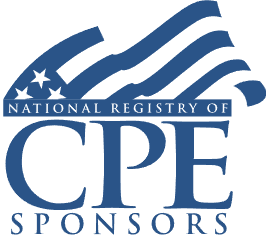Trusts and Situs After Kaestner: Establishing Domicile, Relocating a Trust, and Taxing Beneficiaries

Course Details
- smart_display Format
On-Demand
- signal_cellular_alt Difficulty Level
Intermediate
- work Practice Area
Tax Preparer
- event Date
Wednesday, December 8, 2021
- schedule Time
1:00 p.m. ET./10:00 a.m. PT
- timer Program Length
110 minutes
-
BARBRI is a NASBA CPE sponsor and this 110-minute webinar is accredited for 2.0 CPE credits.
-
BARBRI is an IRS-approved continuing education provider offering certified courses for Enrolled Agents (EA) and Tax Return Preparers (RTRP).
This course will provide professionals who advise and prepare returns for trusts with updated information on trusts' situs in light of the Kaestner decision. Our experts will cover the criteria states use to tax trusts and trust beneficiaries, steps to relocate a trust, and when best to do so.
Faculty

Mr. Warren is an attorney with over 20 years of professional experience practicing law and working in the financial services industry serving the trust and wealth management needs of high and ultra-high net worth families across the nation and around the world. Prior to establishing Bridgeford Trust Company, he was recruited out of a large and prestigious Mid-Atlantic law firm to join the Wealth Management/Trust Department of a regional bank as a Vice President/Senior Trust Administrator. Mr. Warren subsequently transitioned his career to Bank of New York Mellon where he worked exclusively and extensively with high and ultra high net worth families on various wealth management issues including asset protection and legacy planning.

Mr. Lipkind, Chair of the firm’s Tax Planning and Controversies Practice, concentrates his practice in the areas of wealth preservation, asset protection, and state and federal income taxation. He is experienced in the laws, regulations and nuances surrounding gift and estate taxation and tax controversies, and he counsels closely held businesses and their owners on optimal tax structures, internal governance, and mergers and acquisitions. Mr. Lipkind is valued for his sensitivity to estate planning issues, counseling corporate entities as well as high-net-worth individuals on asset protection, wealth preservation, asset protection and intergenerational issues.

Mr. Edmondson practices in partnership, corporate, and individual tax planning; business transactions including mergers and acquisitions; business planning; tax controversy; estate and wealth transfer planning; probate; estate and trust litigation; asset protection; and charitable planning. He has conducted, authored, and directed numerous seminars for professional, academic, and civic groups on taxation, business, asset protection and estate planning. Mr. Edmondson works closely with clients to develop and implement such strategies.
Description
As we slowly come through the uncertainty created by the pandemic and brace for changes in the federal tax code, proper trust jurisdiction selection is more important now than ever. Some states tax a trust based on the location of its administrator, others based on the residence of beneficiaries, and still others may use the state of formation as a basis for taxation. Knowing where a trust is domiciled impacts the taxes paid by the trust and its beneficiaries. Avoiding and deferring these taxes enables significant growth of trust assets, making trust situs a costly or cost-saving determination.
The U.S. Supreme Court in N.C. Dep't of Rev. v. Kimberly Rice Kaestner 1992 Family Trust ruled that a state cannot tax a trust-based solely on the residency of a beneficiary when the beneficiary has no guarantee or right to the income taxed. The Court found that under the Due Process Clause of the U.S. Constitution, a state cannot tax a taxpayer when the taxpayer does not have a minimal connection to the state. Post-Kaestner, advisers and trust administrators need to review past and current residences of beneficiaries, grantors, trustees, and the trust itself. North Carolina had received over 450 refund claims.
Practitioners recognize the benefits of a trust being taxed in one of eight no income tax states (AK, FL, NV, NH, SD, TX, WA, and WY), or the tax-savings of a trust paying tax in a state with a low-income tax rate (i.e., not California). However, other state issues, including privacy, creditor protection, and the availability of powerful trust law concepts such directed trust and trust protectors influence a decision on where to situs a trust.
Listen as our panel of experts explains how to determine a trust's domicile, the methods currently used by states to tax trusts, how to change where a trust is taxed, and the impact of the Kaestner case.
Outline
- Impact of domicile on trusts
- When and where to set up an out-of-state trust
- Strategically locating trusts to minimize state taxes
- Determining situs and state taxation of trust
- Analyzing the trust document
- State methods used to determine domicile and trust taxation
- Trust residency considerations other than tax
- Changing situs: decanting, modifications, and relocation
- Impact of N.C. Dep't of Revenue v. Kaestner 1992 Family Trust
- Which states and methods are impacted
- When to file a claim for a refund
Benefits
The panel will review these important issues:
- State methods for taxing trusts
- Situs considerations when forming a trust
- Objective comparison of "top tier" trust jurisdictions
- When and how to relocate a trust
- Impact of Kaestner on trust taxation
- Amending returns in light of Kaestner
NASBA Details
Learning Objectives
After completing this course, you will be able to:
- Recognize trusts affected by the Kaestner decision
- Ascertain the best location for a trust
- Determine when it is beneficial to move a trust
- Identify various state methods for taxing trusts

Strafford Publications, Inc. is registered with the National Association of State Boards of Accountancy (NASBA) as a sponsor of continuing professional education on the National Registry of CPE Sponsors. State boards of Accountancy have final authority on the acceptance of individual courses for CPE Credits. Complaints regarding registered sponsons may be submitted to NASBA through its website: www.nasbaregistry.org.

Strafford is an IRS-approved continuing education provider offering certified courses for Enrolled Agents (EA) and Tax Return Preparers (RTRP).
Related Courses

Final Section 2801 Regs: Covered Gifts and Bequests From Covered Expatriates
Saturday, March 22, 2025
1:00 p.m. ET./10:00 a.m. PT
Recommended Resources
How CPE Can Bridge the Gap Between What You Know and What You Need to Know
- Career Advancement